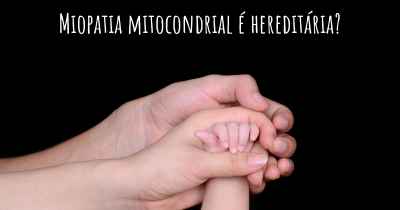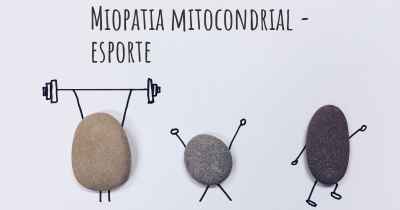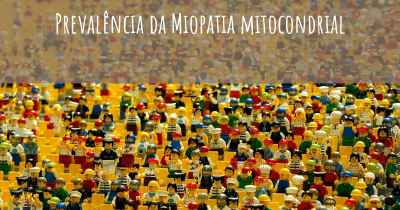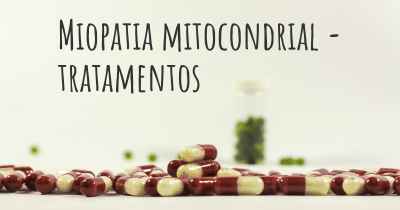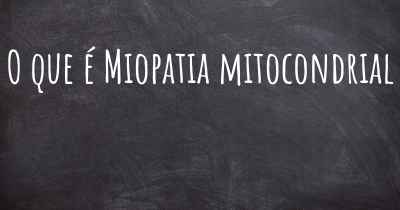
The Story of MMy Life
Erro
Nasci em 28/09/1978, parto normal, quando nasci minha mãe percebeu que eu era um bebê menos firme quando me pegava por debaixo dos braços meus ombros não firmavam, um primeiro sinal de hipotonia identificado na minha percepção atual.
Minha mãe me levou ao pediatra e na época ele dizia que ser normal, que com o tempo eu ficaria mais firme...
Segundo as lembranças dos meus pais, sentei no período certo e comecei a andar por volta dos 1 ano e meio.
Com dois anos de idade, meus pais e parentes percebiam que caía com mais frequência que outros da mesma idade e ao me levantar me apoiava pelo joelho, Gowers’ sign, os médicos da época pensaram ser um problema ortopédico, me indicaram usar botas ortopédicas, alegando que era problema de pé plano, segundo meus pais eu parecia piorar com as botas (talvez pelo peso que me fazia recrutar mais energia para os movimentos).
Então começou meu tratamento no Hospital São Paulo/UNIFESP e no Hospital das Clínicas/USP.
Aos três anos fiz minha primeira biópsia, na coxa esquerda, resultando em suspeita de distrofia muscular, mas muitas dúvidas no diagnóstico.
Aos cinco anos fiz outra biópsia no antebraço direito, que também ficou na hipótese de miopatia/distrofia muscular (duchenne?), mas pelo que estava escrito não era conclusivo, no entanto, a partir daí fui tratado como um paciente com Distrofia Muscular de Duchenne, mas este mesmo diagnóstico foi posto em dúvida quando minha irmã apresentou os mesmos sinais (Viviane Holanda de Menezes), passando para outro tipo de distrofia muscular.
Desde então tomava Predinisona/Corticóide terapia, por exemplo.
Conforme eu crescia e recrutava mais energias, mais problemático eu ficava, tive várias pneumonias de repetição, bronco-pneumonias, igualmente à minha irmã, problemas respiratórios, quedas com cortes importantes na cabeça com necessidade de levar a pontos registrados em minhas cicatrizes atuais (tatuagens da minha vida).
Por volta dos oito anos tive duas internações consecutivas por conta de infecção intestinal, a partir daí passei a ser cada vez mais magro, ficando sempre muito abaixo do IMC.
Neste período fiz exames de análise do suor, e os médico tiveram muita dificuldade para me fazerem transpirar, eles acharam muito estranho isto em mim.
Fiz também exames de eletromiografia (padrão miopático), de crânio e pouco era esclarecido...
Até os 13 anos eu comia muito pouco, devagar, quase não sentia fome, mesmo tomando remédios que abrem apetite, tinha atraso na estatura e no peso.
Um neurologista me receitou para eu tomar Deca Durabolin injetado no músculo do braço, fiz isto por 3 meses, e com isto comecei a ter um pouco mais de energia, comecei a sentir fome e a comer melhor, neste processo de me alimentar com maiores quantidades sentia alguns desconfortos gastro-intestinais com os esforços em comer mais e melhor, apresentava dificuldade para engolir (disfagia), muita secreção que parecia sempre estar gripado.
Com os esforços para comer mais, parecia melhorar minhas energias, eu fazia sempre uma salada de tomate para me ajudar a engolir com menos dificuldades e tomava chá de fitoterápico de macela para me ajudar nos desconfortos gastro-intestinais (diarreias e flatulências frequentes).
No período da pré-adolescência até os 16 anos, foi período mais difícil na parte muscular, sentia muitas dores típicas de acúmulo de ácido láctico e fadigas.
Com o período da puberdade, tive muitas acnes que marcaram toda a minha costa, sangravam bastante, infecionavam, e naquela época ao ir a uma Dermatologista me foi receitado tomar Tetraciclina 500mg 1xdia durante um mês, de fato em poucos dias minhas acnes ficaram menos problemáticas. Porém, em quinze dias meus tornozelos incharam e eu mal conseguia andar e me levantar, por teimosia e acreditar que era algo que estava fazendo errado parei de tomar (ainda bem).
Assustado voltei com minha mãe para um Neurologista do convênio da minha mãe e me disse que era uma evolução da minha provável Distrofia Muscular, devido ao meu crescimento e aumento da carga peso do meu corpo (engraçado que eu já estava muito magro) e desta forma a única ação que eu deveria fazer era comprar e usar uma tornozeleira como paliativo para ajudar. Parei por conta própria de tomar a Tetraciclina e comecei a usa o Cataflan®, pois parecia estar inflamado, no entanto com o tempo o Cataflan® também me causava traumas em movimentos bruscos, então parei com tudo de vez.
Fiquei assustado, não aceitei aquilo que ele falou e passei a me auto observar melhor, resolvi parar de fazer os acompanhamentos e começar a cuidar mais de mim psicologicamente e me tratar com chás fitoterapicos. Apesar de deficiente, eu nunca me encarei limitado como na realidade eu era, sempre me apresentei (pelo menos desde os 7 anos) com um menino que queria ser independente; segui em frente apesar das perspectivas que eram me dadas.
Em épocas de frio, os dedos dos meus pés e das minhas mãos inchavam e eu os coçava bastante, eu mal conseguia dobrar meus dedos por completo. Sarei isto com imersão em água quente e maior proteção contra o frio, repetindo durante alguns anos e desde meus 18 anos estou curado disto. Enquanto não sarava era interessante o quanto minhas mãos sempre estavam geladas (hoje sei que era um problema de circulação, mas nunca um médico havia me explicado antes).
Com este pensamento e experiências comecei a enfrentar a dor muscular, evitando ficar encolhido, parado e caminhando mesmo que devagar. Comecei andando pouco, tendo bastante dificuldades para acompanhar o que era tão trivial para os meus amigos e ano após ano eu fui melhorando. Passei a tomar Centrum por conta própria e suco de laranja todo dia e eu me sentia com as energias melhoradas.
Aos 20 anos entrei na Faculdade de Tecnologia de São Paulo (FATEC-SP) e quatro anos depois eu entrei na empresa que estou até hoje, sendo que antes trabalhei com artesanato de vidros, estagiei como desenvolvedor de sistemas. E em nenhum momento eu me declarei deficiente. Era difícil para eu reconhecer isto e explicar inclusive, até porque eu não conseguia dizer que era portador de Distrofia Muscular se eu andava e conseguia fazer muitas coisas com a minha persistência. Eu me destaco, pois não temo desafios e enfrento os medos/dificuldades.
Aos 26 anos eu fui internado com grande perda de peso, perdendo sangue devido a colite ulcerativa que desenvolvi, suspeita de doença de Chron, cheguei a pesar 35 kg. E após a alta, passei a me alimentar menos com produtos industrializados, fast-food, deixei de beber leite, a lactose e/ou leite industrial contribuiu muito para danificar minha saúde. Durante o tratamento em que desde 2013 fui dispensado, passei a tomar: o Mesalazina, Aztioprina (substituiu a predinisona 5mg e a Mesalazina), ambos não tomo mais; o Omeprazol 20mg (tomo até hoje) e polivitmamínico Vidyn (tomo até hoje);
Aos 28 me casei.
Aos 33, em 2010, depois de ver minha irmã na UTI e depois de muito esforço conseguir obter o resultado da biópsia da Viviane como portadora de Miopatia Mitocondrial (G71.3), passei pela minha terceira biópsia com o Dr. Beny Schimidt, como eu disse eu era um paciente com suspeita de DMD (assim como a minha irmã) ou que aparentemente tinha alguma miopatia ou sequela de miopatia/paraparesia proximal, resultou em um diagnóstico mais objetivo e que me parece próximo da minha experiência. Aí comecei a estudar com afinco a MM e buscar conhecer outros portadores e profissionais de saúde.
Passei a tomar:
Coenzima q10;
Citoneurim, neste caso não me sinto bem, parece que me dá sinais de hipervitaminose;
L-Carnitina;
Vitamina E;
Vitamina C;
Vitamina D.
Durante os 34 anos fiz biópsia de pele e doei meu sangue para a Dra. Célia Tengan (Biologia molecular), que está cuidando com carinho dos meus amigos fibroblastos.
Aos 34 fui pai de uma menina, Clarice, que está mais forte que o pai, pula e corre, e tem bastante energia, quase não cai. Que assim ela continue sempre bem!
Aos 35 me divorciei.
Aos 37 comecei o tratamento de reabilitação que me evidenciou pontos de melhoras a partir da fisioterapia, fonoaudioterapia, hidroterapia, psicoterapia... integrados de forma multidisciplinar, as melhorar acontecem desde esta época, tive menos problemas respiratórios e melhor independência física.
No entanto, percebia que parecia que eu chegava num determinado limite que me levava a alguns problemas como se eu ficasse oxidando. Foi aí que, depois de tentar várias possibilidades, eu comecei a pensar em entender qual síndrome da MM eu me enquadrava.
Em 2017, já com um grupo de pacientes, site e muita informações... identifiquei a necessidade ser feito o exame EXOMA para entendimento genético do DNA Nuclear e DNA Mitocondrial, fiz isto no Mendelics.com e resulto um Síndrome da Depleção Mitocondrial, que coincide com muitos incidentes/afetações da minha vida (veja fotos desde minha infância).
Continuo sempre acreditando que algo de melhor está sempre por vir, confio que no mínimo posso colaborar com a terapia experimental, amo a vida e todos que encontro e me inspiram nos meus dias!
ENGLISH VERSION:
My natural childbirth took place on September 28, 1978. As soon as I was born, my mother realized that my body was not as firm and steady as expected in newborns. Whenever she held me with her hands under my armpits, my tiny arms would fold upwards – which I now acknowledge as probably the first sign of hypotonia.
A little later, my mother consulted me with a pediatrician, who assured her that my situation was going to be normalized soon and that over time I would be as strong as other babies. Once my parents recall that I had already sat tight and started walking by the time I was 18 months old, which is considered normal, the doctor’s statement seemed right for a while.
At the age of two, my parents and relatives began to notice that I fell more often than other children the same age, and that when I got up I would always use my knee as a lever, which could be compatible with Gowers' Sign. The doctors at the time thought it was an orthopedic problem and recommended the use of orthopedic shoes, claiming that this was a consequence of flat feet. But according to my parents, I seemed to get worse with the use of those shoes, perhaps because of the additional weight, which made me recruit more energy for the movements. After that, I was referred to be treated at Hospital São Paulo, which is part of UNIFESP – Universidade Federal do Estado de São Paulo, and Hospital das Clínicas, which is part of USP – Universidade de São Paulo.
At the age of three, I had my first biopsy on the left thigh, which showed only a hypothesis of muscular dystrophy in addition to many doubts regarding the diagnosis. At the age of five, I had another biopsy on the right forearm, which was also inconclusive, but raised the hypothesis of myopathy / muscular dystrophy (Possibly Duchenne?). Despite the uncertain diagnosis, I was then treated as a patient with DMD – Duchenne Muscular Dystrophy. Such diagnosis, however, was questioned when my sister, Viviane Holanda de Menezes, showed the same physical signs. The initial diagnosis was then changed to another type of muscular dystrophy. From that point on I was prescribed a therapy with corticosteroids such as Prednisone.
As I grew older, the more my movements recruited additional energy the more erratic my body became. I ended up having recurrent pneumonia, bronchopneumonia and other respiratory problems as well as falls that caused severe cuts to my head whose stitches turned into scars – the “tattoos” that life gave me.
By the age of eight, I had two consecutive hospitalizations due to intestinal infection. From then on, I became increasingly thinner, having a BMI that was always far below the level considered healthy.
During this period, I was submitted to perspiration tests, which posed a big challenge and intrigued the doctors as they had a really hard time making me sweat. I also did an electroneuromyography (myopathic pattern) and a skull MRI, but all was still unclear.
Until the age of thirteen, I used to eat very little and slowly, I hardly felt hungry even taking pills that were supposed to stimulate my appetite. As a result, my height and weight were below the expected in teenagers the same age.
A neurologist prescribed me intramuscular injections of Deca-Durabolin® (Nandrolone Decanoate) for three months. With that, I started to have a little more energy, to feel hungry and to eat better.
However, at the same time, I felt some gastrointestinal discomfort and had difficulty swallowing (dysphagia), as well as a lot of pulmonary secretions, which I thought was a cold that would never heal.
As the increase in food ingestion seemed to enhance my energy production, I took action to ease its side effects. Two things I did were: 1) adding a tomato salad to the main meals so that I could swallow other types of food more easily and 2) taking macela* tea (*a herb similar to chamomile) to attenuate the gastrointestinal discomfort caused by diarrhea and frequent flatulence.
The period between pre-adolescence and 16 years was the most difficult regarding the muscular development as I experienced a lot of fatigue and pain due to the accumulation of lactic acid. Entering puberty, I had a lot of acne, which left scars on my back as the lesions often bled and got infected. At that time, a dermatologist prescribed Tetracycline 500 mg once a day for a month. In a few days the acne started to heal. However, within a couple of weeks later my ankles swelled and I could barely get up and walk. I do not know if just out of stubbornness or actually out of a certain perception that the antibiotic was making me sick, I decided to stop taking it (Thank God!).
Despite being terrified, I went with my mother to see another neurologist – one of her medical insurance. He told us that it was an evolution of my potential Muscular Dystrophy, due to my growth and the increase in my body weight, which was ironic because I was already very thin at the time! The doctor also told us that the only thing I should do was wearing an ankle brace as a palliative measure. In addition to discontinuing Tetracycline, I started taking Cataflam® also by my own decision, as I had the feeling that my ankles were inflamed. However, over time Cataflam® proved to weaken my body to the point I started having frequent sprains and torsions in response to sudden movements. Because of that, I stopped taking it too.
Then I got even more scared, but I decided not to accept what that neurologist said. So I began to observe myself more carefully, I decided to stop doing or taking whatever the doctors had prescribed and began to take care of myself psychologically and to treat myself with herbal teas. Although having some level of disability, I never saw myself as a limited person, which I was indeed, but I always behaved (at least since I was 7 years old) as a boy who wanted to be independent; I stayed strong and kept going despite the prospects I was presented with.
Since I was about 4 or 5 years old, in the cold weather, my fingers and toes used to swell so much that I could barely bend them completely and I would always scratch them hard. For years I would immerse my hands and feet in hot water and increase their protection against the cold. However, I haven’t had such discomfort anymore since I was 18 years old. While going through this problem it was interesting how cold my hands were all the time – now I know it was a blood circulation problem, but never a doctor explained me anything about it.
With my willpower and background I began to fight muscle pain, avoiding getting shrunken or standing still for long, and trying to walk around as much as possible even if slowly. I started with short walks, having a hard time following the pace of my non-disabled friends at first, but then, year after year I got better. I decided on my own to start taking Centrum® and drinking orange juice every day. As a consequence, I felt stronger.
At the age of 20, I entered FATEC-SP – Faculdade de Tecnologia de São Paulo, and four years later I started working at the company where I am currently employed. Before that, I used glass to make crafts and interned as a computer systems developer. Despite all the difficulties, never did I declare myself disabled. It was difficult for me to recognize and even explain my disability, because I could not say that I had Muscular Dystrophy, since I was able to walk and do many things due to my persistence. I have always stood out because I will not retreat in the face of a challenge and I will always fight all my fears and difficulties.
At age 26, I was hospitalized for major weight and blood loss due to ulcerative colitis (hypothesis of Crohn's disease). I ended up weighing only 35 kg in this period. After being discharged, I cut down on processed and junk food. I also stopped drinking milk, because lactose and processed milk proved very harmful to my health.
During the treatment of ulcerative colitis, which lasted until 2013, I took the following drugs: Mesalazine, Azathioprine (this was later prescribed to replace Prednisone 5 mg and Mesalazine), Omeprazole 20 mg and Vidyn® (a multivitamin complex). Nowadays I still take Omeprazole and Vidyn®.
When I was 28 years old I got married.
In 2011, at the age of 33, after seeing my sister Viviane in the ICU due to complications of a then unknown Mitochondrial Myopathy, with great effort I was able to obtain the result of her biopsy, which finally diagnosed her as having Mitochondrial Myopathy (ICD-10 G71.3). I also had my third biopsy with Beny Schmidt, M.D. (recommended by Acary Oliveira, M. D.)– as I said earlier, I was a patient with a non-confirmed hypothesis of DMD (just like my sister) or apparently with some kind of myopathy or sequels of myopathy / proximal paraparesis. This last biopsy resulted in a more accurate diagnosis and seemed to be compatible with my experience. Since then, I have begun to study MM and seek out other health professionals and patients with whom I could exchange information and share experiences.
These are the substances I am taking at the moment:
Coenzyme Q10
Citoneurim®, which does not seem to be doing me any good because I seem to have signs of hypervitaminosis
L-Carnitine
Vitamin E
Vitamin C
Vitamin D
At age 34, I donated samples of my skin and blood to Celia Tengan, M.D. (Molecular Biology), who has been taking good care of my fibroblasts since then. That same year, I became the father of a girl, Clarice, who is stronger than me: she jumps, runs, is very energetic and almost never falls. May she always be like this!
When I was 35, I got divorced.
At the age of 37, I began a rehabilitation program, which was devised by Beny Schmidt, M.D., including physical therapy, speech therapy, hydrotherapy, psychotherapy, among other medical and healthcare specialties, integrated in a multidisciplinary way. Since then, the improvement in my health has been evident and progressive. Not only have I hardly ever had respiratory problems but I have also gained further physical independence.
Nevertheless, in spite of such progress, it seemed to me that I had reached a dead end which made me feel as if the whole advance had turned into a setback, as if rather than feeling energetic I felt utterly worn out. It was then that I made the decision to find out exactly which Mitochondrial Myopathy Syndrome could possibly encompass all my symptoms. That way I would probably be able supply doctor Beny Schmidt's team with accurate information to help them adapt the treatment to my genetic profile.
Then, in 2017, already in contact with a great number of patients, having put on a website and aware of a range of data and information, I had my Exome done in order to determine the genetic profile of both nuclear and mitochondrial DNA. This test was carried out by the laboratory Mendelics and diagnosed me with Mitochondrial Depletion Syndrome, which was consistent with most of the incidents and hardships I have suffered during my life (see photos from my childhood).
Despite all this, I keep on believing that something better is always yet to come. I trust myself to be the best player I can for the team who is helping me win if not all, at least most of the challenges that I have been facing throughout my life!

0 comentários


